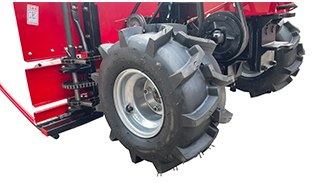Сеп . 28, 2024 16:42 Back to list
Understanding Brake Drum Mechanics and Their Importance in Vehicle Safety
Understanding Brake Drums A Crucial Component in Automotive Safety
Brake drums are an integral part of many automotive braking systems, especially in older vehicles and certain types of heavy-duty trucks. Understanding their function, design, and maintenance is crucial not only for automotive professionals but also for vehicle owners who take their safety seriously.
What is a Brake Drum?
A brake drum is a cylindrical component that houses the braking mechanism in drum brake systems. When the brake pedal is pressed, hydraulic pressure activates the brake shoes inside the drum, pushing them against its inner surface. The friction generated slows down the vehicle, allowing it to come to a stop. Brake drums are typically made of cast iron or aluminum due to their strength, durability, and ability to dissipate heat effectively.
Types of Brake Drums
1. Standard Brake Drums These are the most common types found in vehicles. They provide adequate stopping power and performance for everyday driving conditions. 2. Ventilated Brake Drums Designed with a series of vents or holes, these drums allow for better airflow and heat dissipation. This feature is particularly important in high-performance vehicles or those used in heavy-duty applications, as they can help prevent brake fade during prolonged use.
3. Drilled and Slotted Brake Drums Some aftermarket options include drilled or slotted designs that further enhance cooling and performance. While they are often associated with sports cars, their advantages can be beneficial for any vehicle that regularly experiences heavy braking.
The Advantages of Using Brake Drums
Brake drums offer several benefits over disc brakes, particularly in specific applications
- Cost-Effective Brake drums are generally less expensive to manufacture and replace than disc brake systems. This can lead to lower repair costs and better affordability for budget-conscious consumers. - Simplicity and Reliability The design of drum brakes is relatively straightforward, which can contribute to their reliability over time. They tend to perform well in wet conditions, as the enclosed design helps prevent water and debris from adversely affecting the brakes. - Enhanced Parking Brake Functionality Drum brakes typically include a mechanism that makes them more effective as parking brakes. The construction allows for a secure hold, even on slopes.
Disadvantages of Brake Drums
brake drum man

Despite their benefits, brake drums also have notable downsides
- Heat Dissipation Drum brakes can have poorer heat dissipation compared to disc brakes. Under extreme conditions, they are more prone to brake fade, where the braking effectiveness diminishes due to overheating. - Weight Brake drums tend to be heavier than their disc counterparts, which can affect a vehicle’s overall weight distribution and efficiency. - Maintenance While durable, brake drums do require periodic inspection and maintenance. If the brake shoes wear down or if the drum becomes warped or scored, it can lead to reduced braking performance and potentially dangerous situations.
Maintenance Tips for Brake Drums
To ensure optimal performance and safety, regular maintenance of brake drums is essential
1. Inspect Regularly Have your brake system inspected by a qualified technician at regular intervals, especially if you notice unusual noises or reduced braking efficiency. 2. Check for Wear Monitor the condition of brake shoes and the inner surface of the drum. Uneven wear can be indicative of larger issues within the brake system.
3. Ensure Proper Adjustment Drum brakes often require adjustments to maintain optimal performance. Make sure that the brake shoes are properly aligned and adjusted.
4. Keep it Clean Dirt and debris can affect braking performance. Ensure that the brake assembly is clean and free from contaminants.
5. Consider Upgrades For vehicles that experience heavy use, consider upgrading to vented or performance brake drums.
Conclusion
Brake drums play a vital role in a vehicle's braking system, providing safety and reliability when properly maintained. Understanding the function, advantages, and disadvantages of brake drums can help vehicle owners make informed decisions regarding their brake systems. As the automotive industry continues to evolve, with advancements such as electric vehicles and autonomous systems, the fundamental importance of brake systems—drum or otherwise—remains paramount in ensuring the safety of drivers and passengers alike. Prioritizing brake maintenance and understanding how these components work can significantly enhance the safety and functionality of any vehicle.
-
High-Performance Brake Drum Liza Durable Drum Brake Solutions
NewsMay.18,2025
-
Brake Drum Liza High-Quality Drum Brake & Shoe Compatibility
NewsMay.18,2025
-
Brake Drum Liza High-Quality Drum Brake Components & Shoes
NewsMay.18,2025
-
IVEKO High-Performance Brake Drums Durable & Precision-Engineered
NewsMay.17,2025
-
Brake Drum Man High-Quality Drum Brake & Shoe Solutions
NewsMay.17,2025
-
Brake Drum Man Premium Drum Brake & Shoe Solutions OEM-Compliant
NewsMay.16,2025
